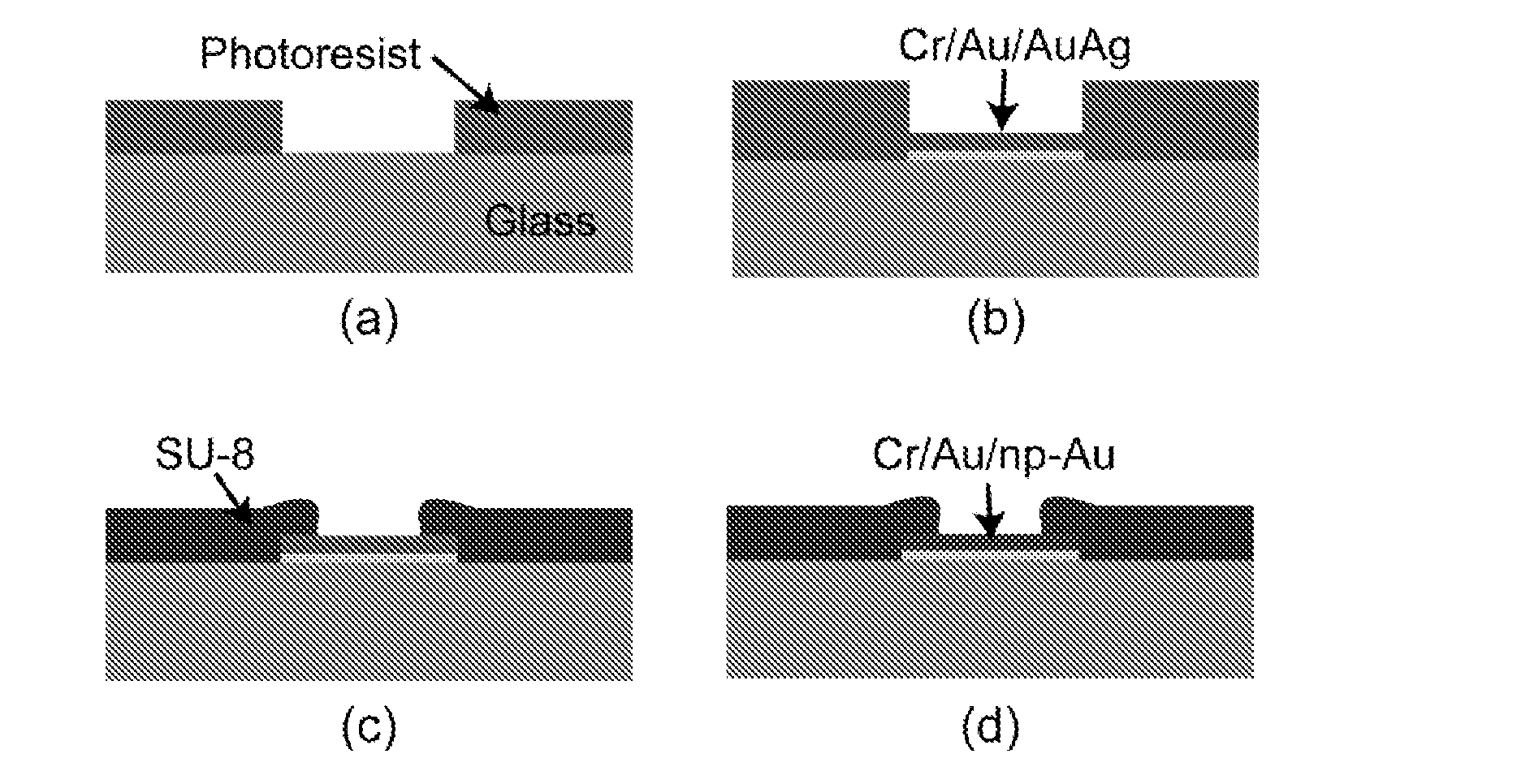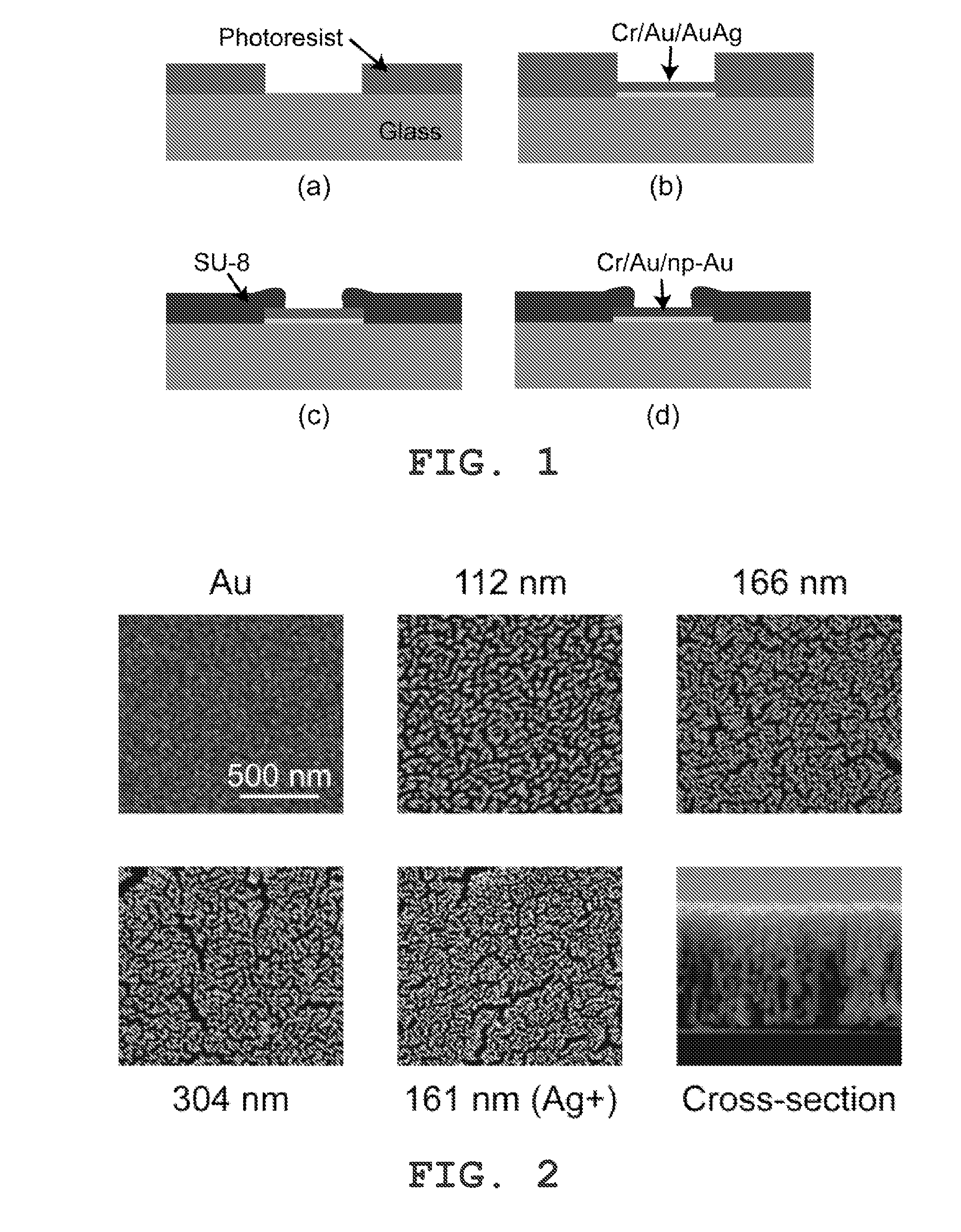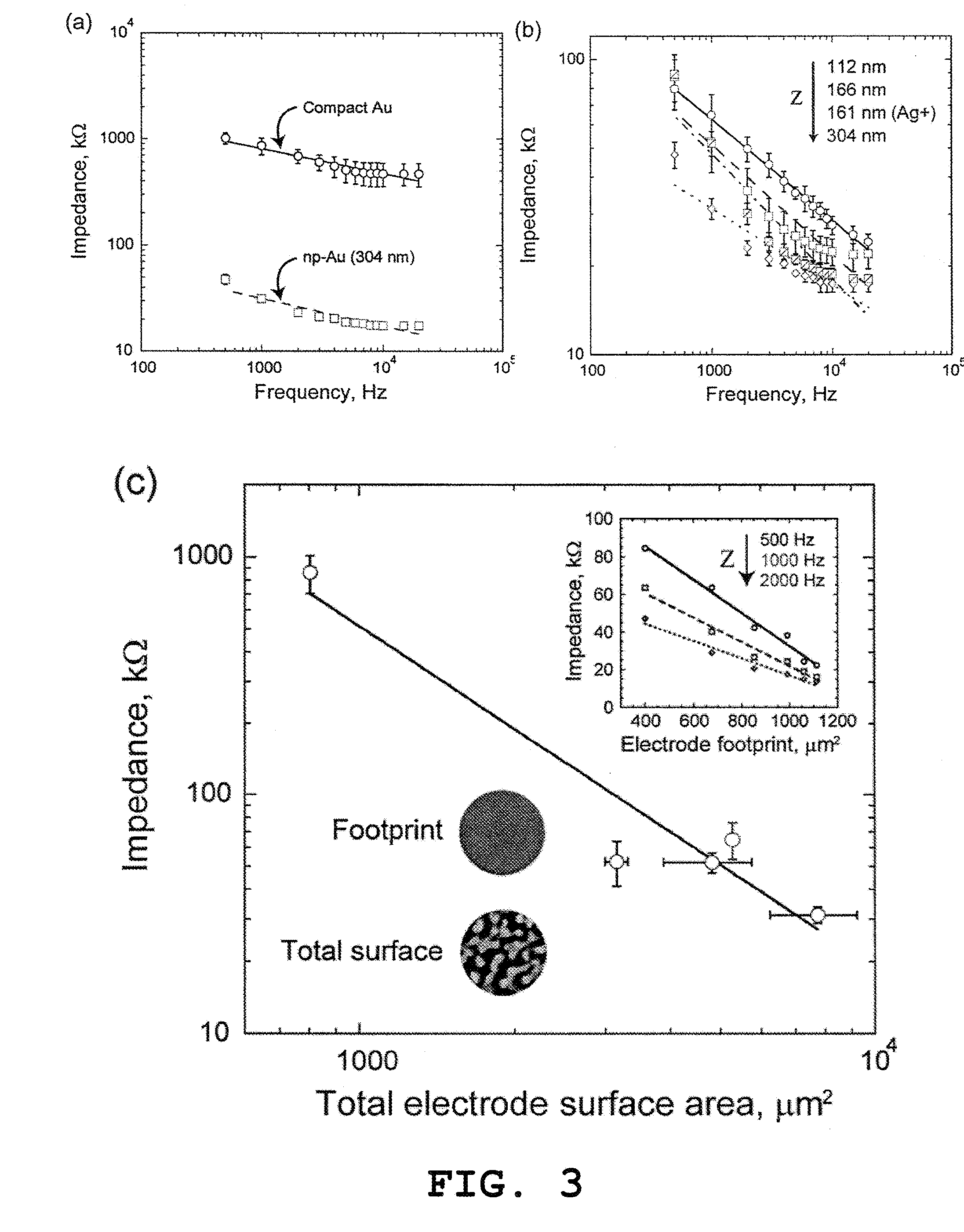Nanoporous Metal Multiple Electrode Array and Method of Making Same
a technology of nanoporous metal and multiple electrodes, applied in the field of multiple electrode arrays, can solve the problems of poor functional coating adhesion, difficult to obtain high spatial resolution, complicated fabrication techniques, etc., and achieve the effects of improving electrode-electrolyte impedance, low impedance, and high surface area-to-volume ratio
- Summary
- Abstract
- Description
- Claims
- Application Information
AI Technical Summary
Benefits of technology
Problems solved by technology
Method used
Image
Examples
example i
[0049]Various materials used in preparation of the nanoporous gold multiple electrode arrays were obtained as follows. Glass slides 75 mm×50 mm were purchased from VWR (West Chester, Pa.). Gold, silver, and chrome targets were all 99.95% pure and obtained from Kurt J. Lesker (Clairton, Pa.). Ethanol, methanol, acetone, sulfuric acid, hydrogen peroxide, hexamethyldisilazane (photoresist adhesion promoter) were obtained from Sigma-Aldrich (St. Louis, Mo.). AZ400K developer and AZ4330 positive photoresist (PR) were obtained from Clariant Corporation (Somerville, N.J.). SU8-2 and Edge Bead Removal solution (SU8 developer) were obtained from Microchem Corporation (Newton, Mass.). Polydimethylsiloxane (PDMS) kit was obtained from Sylgard 184, Dow Corning (Wilmington, Mass.). Silicon wafers were obtained from Silicon Quest International, Inc. (Santa Clara, Calif.). Impedance measurements and field potential recordings were carried out in artificial cerebrospinal fluid (ACSF), composed of 1...
example ii
[0077]To help establish the efficacy of various drug or pharmaceutical coatings on a nanoporous metal material, we developed an immunostaining protocol to visualize astrocytes, microglia, and cell proliferation, which are key indicators of a foreign body response. By administering such a protocol to test tissue samples, the integrity of a tissue sample can be quantitatively assessed.
[0078]In order to test the effect of a classical anti-inflammatory drug, dexamethasone, in gliosis, we dissected 350 μm-thick hippocampus slices from postnatal day 7 Sprague-Dawley rat pups. Organotypic slices have been shown to provide a physiologically and pharmacologically relevant model, as they preserve the cytoarchitecture of the brain and provide a means to identify pharmaceuticals for in vivo validation. In addition, the tissue damage due to slice preparation partially mimics the damage induced by neural probe insertion.
[0079]The slices were seeded in a serum-containing medium (1:1:2 horse serum,...
example iii
[0082]Having established a protocol for the evaluation of glial scarring as described in Example II, in separate trials we used fluorophore-conjugated primary antibodies: anti-glial fibrillary acidic protein (anti-GFAP) for astrocytes (red) and anti-BrdU (infra-red), and subsequently imaged CA3 and DG regions of the slices using a fluorescent confocal microscope at 7× magnification and clearly identified BrdU and GFAP positive cells. For live microglia staining, we applied fluorophore-conjugated Isolectin-B4 with the regular medium for 1 hour and imaged slices with a confocal microscope. For image analysis we used Fiji (ImageJ) to determine the number of proliferating cells (BrdU positive) and astrocyte reactivity (GFAP intensity).
[0083]Using the organotypic slices and immunostaining approaches, the effect of different pharmaceutical medium supplements were evaluated at various concentrations: (i) immunosuppressant rapamycin (0.1 and 1 μM), a mTOR signaling inhibitor that results in...
PUM
 Login to View More
Login to View More Abstract
Description
Claims
Application Information
 Login to View More
Login to View More - R&D
- Intellectual Property
- Life Sciences
- Materials
- Tech Scout
- Unparalleled Data Quality
- Higher Quality Content
- 60% Fewer Hallucinations
Browse by: Latest US Patents, China's latest patents, Technical Efficacy Thesaurus, Application Domain, Technology Topic, Popular Technical Reports.
© 2025 PatSnap. All rights reserved.Legal|Privacy policy|Modern Slavery Act Transparency Statement|Sitemap|About US| Contact US: help@patsnap.com



